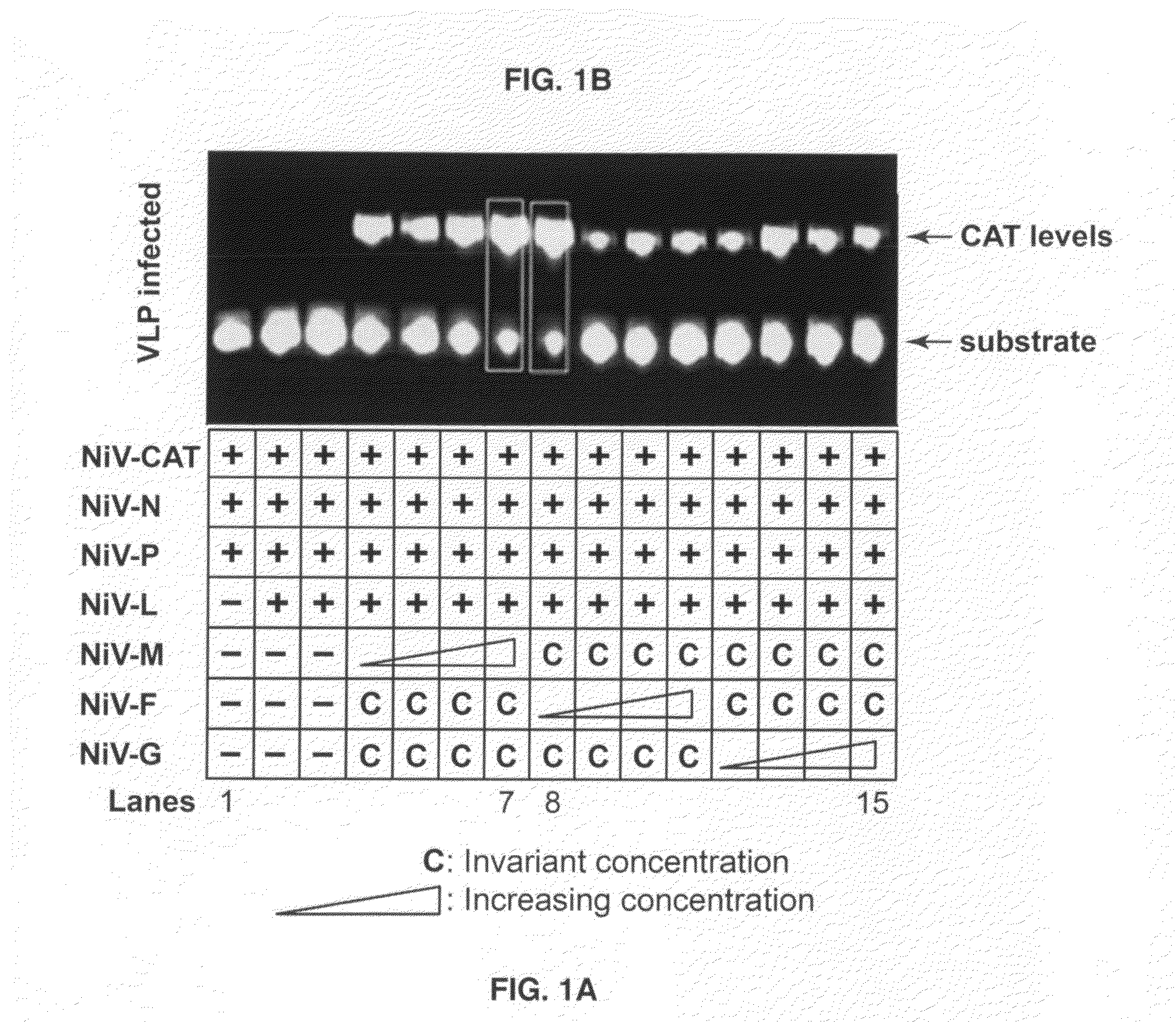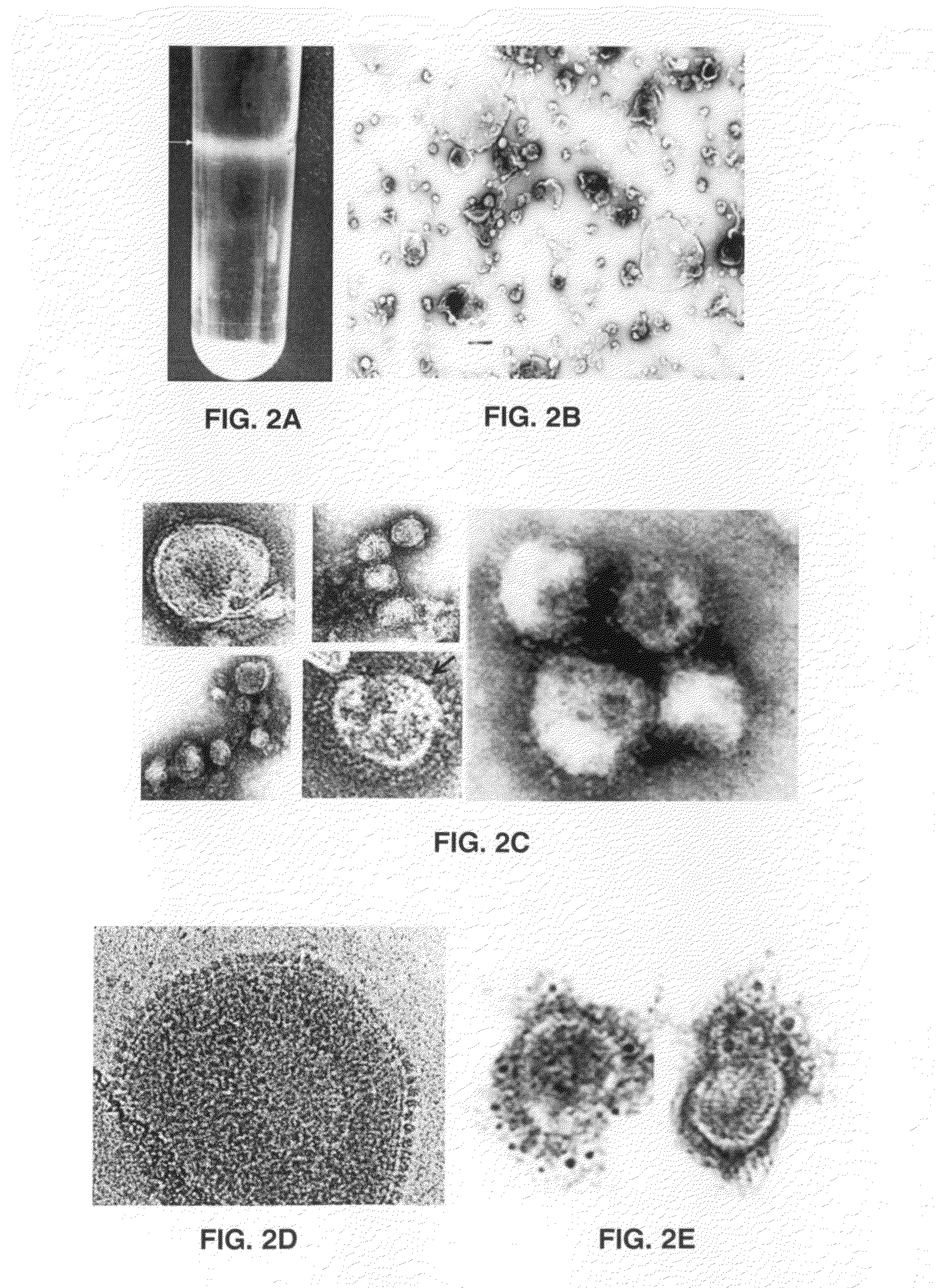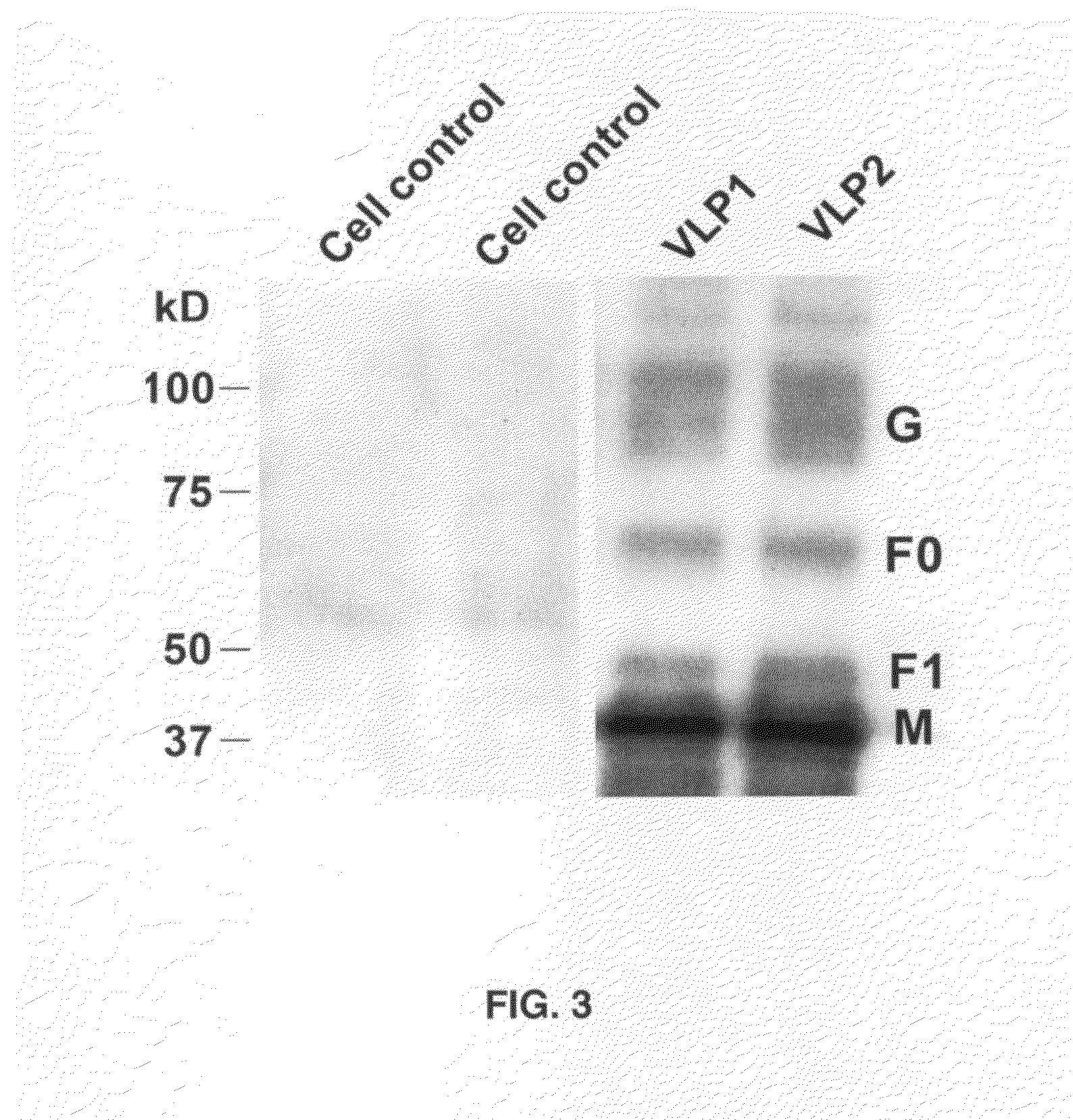Fusogenic virus-like particles and uses thereof
a virus-like particle, non-fusogenic technology, applied in the field of parasitovirus biology, can solve the problems of inability to induce syncytia formation and non-fusogenicity of ndv vlps, and achieve the effect of good indication of the integrity of the rna
- Summary
- Abstract
- Description
- Claims
- Application Information
AI Technical Summary
Benefits of technology
Problems solved by technology
Method used
Image
Examples
example 1
Protein Expression Vectors, Cells and Viruses
[0062]NiV expression plasmids pCAGGS-G, F, and M were all under the control of chicken beta actin promoter [56], and were constructed as described [20]. Human embryonic kidney 293 cells (ATCC, CRL-1573) and 293T cells (ATCC, CRL-11268) were grown in Dulbecco's minimum essential medium supplemented with 10% fetal bovine serum (FBS) and penicillin and streptomycin, and maintained in the same medium containing 2% FBS. The minigenome was used for optimizing VLP formation as described [57]. All the initial minigenome-based optimization steps were done in BHK-T7 cells (obtained from Dr. N. Ito). These conditions were applicable to produce VLPs in 293T cells and were used throughout to generate the VLPs described herein.
example 2
[0063]293T cells were grown in Dulbecco's complete medium to achieve semi-confluent (80-90% density) cell monolayers. The cells were transiently transfected with the plasmids constructs using the lipid reagent Lipofectamine 2000 according to the guidelines provided by the manufacturers' instructions (Invitrogen Inc). At 48 hrs post-transfection, the VLP-containing cell supernatants (SUP) were harvested for concentration and purification of the VLPs. Because of the fusogenic property of these VLPs, there was widespread syncytia formation at this time point although the cells were still adherent.
example 3
VLP Harvest and Purification
[0064]VLPs released in the transfected-cell SUP were harvested and clarified by centrifugation at 3,500 rpm for 30 minutes at 4° C. and concentrated by sucrose density gradient centrifugation based on previous descriptions [44,45,58]. Briefly, the clarified SUPs were concentrated by ultracentrifugation through 20% sucrose cushion in TN buffer (0.1M NaCl; 0.05M Tris-HCL, pH 7.4) at 200,000×g for 8 hours at 4° C. The resulting VLP pellet in ˜0.5 ml volume was purified on a discontinuous sucrose gradient formed by layering 80%, 65%, 50% and 10% sucrose in TN buffer. After centrifugation at 186,000×g for 8 hours, the top ˜1.5 ml of the gradient (which included the VLP-containing band at the interface between the 10% and 50% sucrose layers) was resuspended in 20% sucrose buffer and centrifuged once more at 160,000×g for one hour. The resulting pellet was resuspended in 20% sucrose solution in endotoxin-free TN bufffer and stored at 4° C. for subsequent analysi...
PUM
| Property | Measurement | Unit |
|---|---|---|
| Mass | aaaaa | aaaaa |
| Mass | aaaaa | aaaaa |
| Surface | aaaaa | aaaaa |
Abstract
Description
Claims
Application Information
 Login to View More
Login to View More - R&D
- Intellectual Property
- Life Sciences
- Materials
- Tech Scout
- Unparalleled Data Quality
- Higher Quality Content
- 60% Fewer Hallucinations
Browse by: Latest US Patents, China's latest patents, Technical Efficacy Thesaurus, Application Domain, Technology Topic, Popular Technical Reports.
© 2025 PatSnap. All rights reserved.Legal|Privacy policy|Modern Slavery Act Transparency Statement|Sitemap|About US| Contact US: help@patsnap.com



